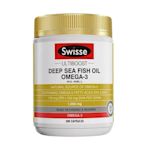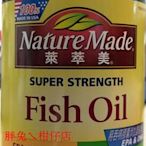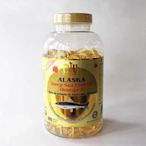搜尋結果
 $499買三送一 買六送三 限殺活動Salvia高單位Omega-3 600魚油膠囊-促進健康循環力,思緒靈活學習加分 滿千免運【Salvia】莎菲亞
$499買三送一 買六送三 限殺活動Salvia高單位Omega-3 600魚油膠囊-促進健康循環力,思緒靈活學習加分 滿千免運【Salvia】莎菲亞 $360【穀粉小舖 Good Friend Shop】 腰果 粉 600g 富含豐富Omega-3.. (袋裝).穀粉小舖 Good Friend Shop
$360【穀粉小舖 Good Friend Shop】 腰果 粉 600g 富含豐富Omega-3.. (袋裝).穀粉小舖 Good Friend Shop $765Life+ PURE-EPA魚油 30粒/盒.取得高純度魚油EPA.補充寵物所需Omega 3.犬貓營養品寵喵樂旗艦店
$765Life+ PURE-EPA魚油 30粒/盒.取得高純度魚油EPA.補充寵物所需Omega 3.犬貓營養品寵喵樂旗艦店 $735美國進口OMEGA-3深海魚油1000mg*100粒PuritansPrid3832#樂天高爾夫直銷
$735美國進口OMEGA-3深海魚油1000mg*100粒PuritansPrid3832#樂天高爾夫直銷![附發票 北歐天然寵物魚油 180顆 犬貓 Nordic Naturals 膠囊 Omega-3 北歐魚油 寵物 附發票 北歐天然寵物魚油 180顆 犬貓 Nordic Naturals 膠囊 Omega-3 北歐魚油 寵物]() $1140附發票 北歐天然寵物魚油 180顆 犬貓 Nordic Naturals 膠囊 Omega-3 北歐魚油 寵物Y5770263823
$1140附發票 北歐天然寵物魚油 180顆 犬貓 Nordic Naturals 膠囊 Omega-3 北歐魚油 寵物Y5770263823![【多件優惠】Swisse深海魚油200粒DNA無腥味EPA澳商斯維詩DEEP SEA FISH OIL OMEGA-3 【多件優惠】Swisse深海魚油200粒DNA無腥味EPA澳商斯維詩DEEP SEA FISH OIL OMEGA-3]() $900【多件優惠】Swisse深海魚油200粒DNA無腥味EPA澳商斯維詩DEEP SEA FISH OIL OMEGA-3逆齡奇肌海外代購
$900【多件優惠】Swisse深海魚油200粒DNA無腥味EPA澳商斯維詩DEEP SEA FISH OIL OMEGA-3逆齡奇肌海外代購![Nature Made 萊萃美Omega-3魚油軟膠囊 200粒/罐 Nature Made 萊萃美Omega-3魚油軟膠囊 200粒/罐]() $1326Nature Made 萊萃美Omega-3魚油軟膠囊 200粒/罐胖兔ㄟ柑仔店/請留意即時通訊息
$1326Nature Made 萊萃美Omega-3魚油軟膠囊 200粒/罐胖兔ㄟ柑仔店/請留意即時通訊息![熱賣 加拿大 bill阿拉斯加 深海魚油omega-3歐米伽3 300粒 熱賣 加拿大 bill阿拉斯加 深海魚油omega-3歐米伽3 300粒]() $1055熱賣 加拿大 bill阿拉斯加 深海魚油omega-3歐米伽3 300粒家家健
$1055熱賣 加拿大 bill阿拉斯加 深海魚油omega-3歐米伽3 300粒家家健![【元氣一番.com】《美國進口台灣分裝 批發價 喜健達 深海魚油-360顆入》mct 生酮飲食Omega-3好油補充 【元氣一番.com】《美國進口台灣分裝 批發價 喜健達 深海魚油-360顆入》mct 生酮飲食Omega-3好油補充]() $960【元氣一番.com】《美國進口台灣分裝 批發價 喜健達 深海魚油-360顆入》mct 生酮飲食Omega-3好油補充元氣一番.com
$960【元氣一番.com】《美國進口台灣分裝 批發價 喜健達 深海魚油-360顆入》mct 生酮飲食Omega-3好油補充元氣一番.com![公司貨💯【大醫生技】 85%高濃度極鮮魚油 盒裝60顆 Omega-3 EPA+DHA 新鮮魚油 公司貨💯【大醫生技】 85%高濃度極鮮魚油 盒裝60顆 Omega-3 EPA+DHA 新鮮魚油]() $559公司貨💯【大醫生技】 85%高濃度極鮮魚油 盒裝60顆 Omega-3 EPA+DHA 新鮮魚油哇寶箱
$559公司貨💯【大醫生技】 85%高濃度極鮮魚油 盒裝60顆 Omega-3 EPA+DHA 新鮮魚油哇寶箱![【Dr.Brain 關鍵智】兒童 3合1學習能量飲EX升級版 蘋果口味 20mL 30入/盒(魚油 DHA Omega-3) 【Dr.Brain 關鍵智】兒童 3合1學習能量飲EX升級版 蘋果口味 20mL 30入/盒(魚油 DHA Omega-3)]() $2099【Dr.Brain 關鍵智】兒童 3合1學習能量飲EX升級版 蘋果口味 20mL 30入/盒(魚油 DHA Omega-3)購物中心折價券
$2099【Dr.Brain 關鍵智】兒童 3合1學習能量飲EX升級版 蘋果口味 20mL 30入/盒(魚油 DHA Omega-3)購物中心折價券![附發票 大瓶237ml北歐天然寵物魚油 犬 貓 Nordic Naturals Omega-3 Pet狗 北歐魚油 寵物 附發票 大瓶237ml北歐天然寵物魚油 犬 貓 Nordic Naturals Omega-3 Pet狗 北歐魚油 寵物]() $810附發票 大瓶237ml北歐天然寵物魚油 犬 貓 Nordic Naturals Omega-3 Pet狗 北歐魚油 寵物Y5770263823
$810附發票 大瓶237ml北歐天然寵物魚油 犬 貓 Nordic Naturals Omega-3 Pet狗 北歐魚油 寵物Y5770263823
Omega−3 fatty acids, also called Omega−3 oils, ω−3 fatty acids, Ω-3 Fatty acids or n−3 fatty acids, are polyunsaturated fatty acids (PUFAs) characterized by the presence of a double bond, three atoms away from the terminal methyl group in their chemical
Omega-3 fatty acids, also called ω−3 fatty acids or n−3 fatty acids, are polyunsaturated fatty acids (PUFAs). Omega−3 fatty acids are important for normal metabolism.
Mechanism of action. Omega-3-acid ethyl esters, like other omega-3 fatty acid-based drugs, appears to reduce production of triglycerides in the liver and to enhance clearance of triglycerides from circulating very low-density lipoprotein (VLDL) particles.
Omega-3 carboxylic acids [1] ( Epanova) is a formerly marketed yet still not an Food And Drug Administration (FDA) approved prescription medication–since taken off market by the manufacturer–used alongside a low fat and low cholesterol diet that lowers high triglyceride (fat) levels in adults with very high levels. [2]
Omega-7 fatty acids are a class of unsaturated fatty acids in which the site of unsaturation is seven carbon atoms from the end of the carbon chain. The two most common omega-7 fatty acids in nature are palmitoleic acid and vaccenic acid. [1] They are widely used in cosmetics due to their moisturizing properties.
References. Fatty acid ratio in food. Only two essential fatty acids are known to be essential for humans: alpha-linolenic acid (an omega-3 fatty acid) and linoleic acid (an omega-6 fatty acid ). [1] . The biological effects of the ω-3 and ω-6 fatty acids are mediated by their mutual interactions.
This page was last edited on 19 March 2004, at 12:39 (UTC). Text is available under the Creative Commons Attribution-ShareAlike License 4.0; additional terms may ...








